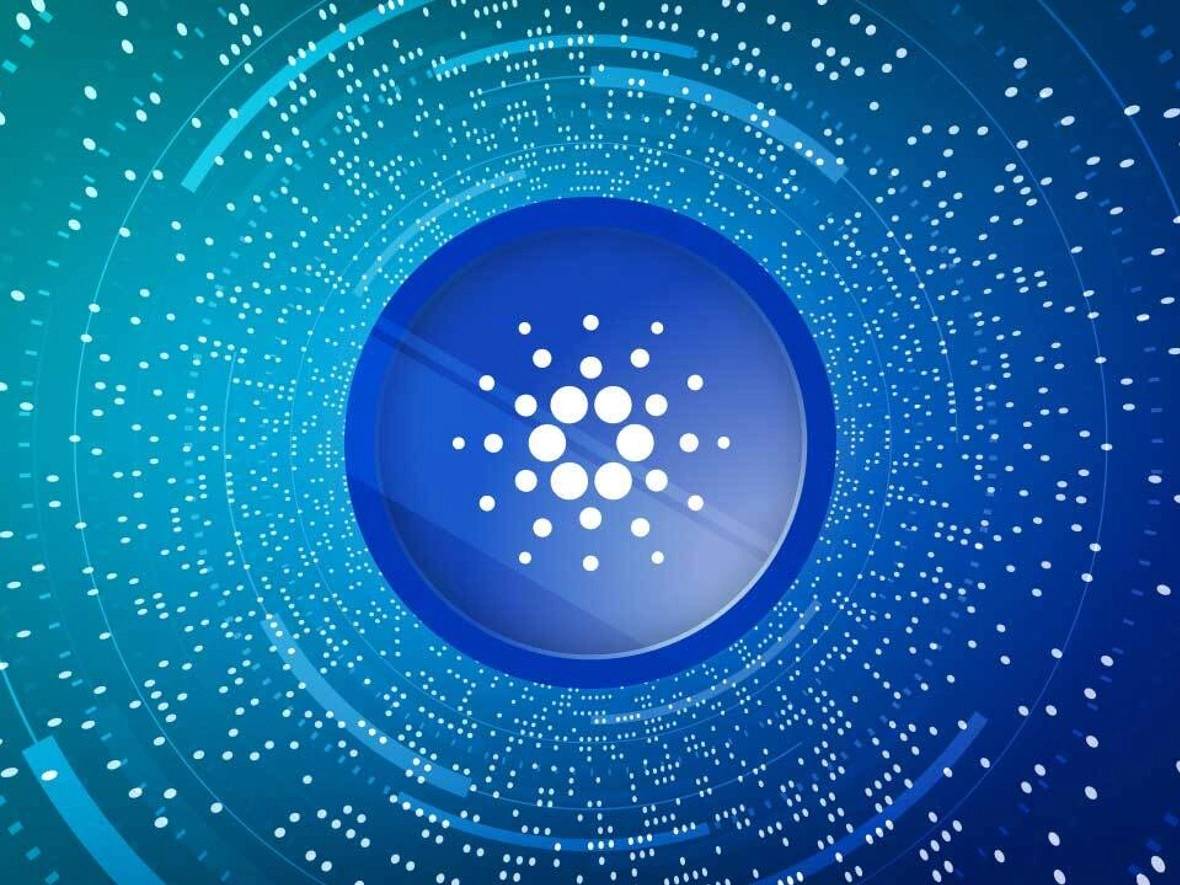订阅 wiki
Share wiki
Bookmark
Cardano
Cardano
Cardano 是一个去中心化的权益证明 (PoS) 区块链,旨在成为比工作量证明 (PoW) 网络更有效的替代方案。Cardano 的代币 ADA 用于区块链的 PoS 共识机制。它作为奖励,颁发给参与权益池的用户为区块链所做的工作。[1][2][3]
2022 年 2 月,Cardano 钱包的数量突破了 300 万大关。自 2020 年 12 月以来,它增长了 1,200%,从 19 万增加到 300 多万。在 Alonzo 升级之后,智能合约的数量也随之激增,2022 年 1 月 27 日,Cardano 突破了 1,000 个智能合约的里程碑。[4]
概述
Cardano成立于2017年,以16世纪意大利博学家Gerolamo Cardano命名。19世纪的数学家Ada Lovelace被广泛认为是第一位计算机程序员,ADA原生代币的命名灵感就来源于她。ADA代币旨在确保所有者可以参与网络运营。因此,那些持有加密货币的人有权对软件的任何拟议变更进行投票。根据分层区块链背后的团队的说法,其技术已经有一些引人注目的用例,该技术旨在实现去中心化应用程序和智能合约的模块化开发。[5]
2021年8月,Charles Hoskinson宣布推出Alonzo硬分叉,导致Cardano价格飙升,2021年9月上涨116%。2021年9月12日,Cardano“Alonzo”硬分叉正式启动,将智能合约功能引入区块链。启动后24小时内,部署了100多个智能合约。[5]
历史
2015年,以太坊的联合创始人Charles Hoskinson开始了Cardano的开发。该平台于2017年晚些时候推出。Cardano将自己定位为以太坊的替代品。这两个平台都用于类似的应用,例如智能合约,并且目标是构建一个连接和去中心化的系统。[4][6]
2011年,Hoskinson首次开始挖掘和交易加密货币。后来,在2013年,他创建了一个关于比特币的教育课程,超过8万人参加,标志着他首次专业涉足加密货币领域。[4]
在协助以太坊的早期开发和以太坊基金会的成立后,Hoskinson辞职,探索自己关于“第三代”区块链的想法。Cardano项目成立于2015年,旨在开创区块链的新时代,因为其创始人预见到传统区块链肯定会遇到的可扩展性难题。[6]
2022年10月6日,Charles Hoskinson将拥有超过60万粉丝的以太坊经典Twitter账户更改为“Ergo”。此举受到了以太坊社区的强烈批评,尤其是当成员要求归还Twitter账户时。然而,Charles Hoskinson回复说:[35][36]
“归还?这是我的账户。至于归还,我无法拿回我们花费的数百万美元的开发费用,也无法拿回多年来支持一个似乎只想维持现状的区块链的时间。我们就算扯平了”
据说这是为了推广Ergo平台,这是一个与Cardano密切相关的工作量证明区块链,但遭到了加密社区的强烈反对,正如支持以太坊经典的公共慈善机构的执行董事Bob Summerwill在Twitter上所说的那样:[37]
“6年的社区工作已经被抹去了。”
区块链基础设施
在交易中,有两个组成部分:发送和记录代币流动的机制,以及移动代币的原因和条件。后者可能简单或复杂,涉及大量数据、多个签名和特殊事件。对价值流动的原因和条件进行建模可能很困难,因为对于相关实体而言,这些原因和条件可能是高度个人化和不可预测的。加密货币的使用也可能引发法律和安全问题,例如可能促成非法或不受欢迎的在线活动,并具有与合法交易相同的审查抵抗能力。Cardano 通过创建两个独立的层来区分出现的问题,从而解决这些问题。[38][39][40]
Cardano 结算层 (CSL)
Cardano 结算层 (CSL) 是一个价值账本,用于在 Cardano 平台上结算数字资产交易。CSL 是 ADA 加密货币 的所在地,并且在实施 智能合约 后,它也将成为 Cardano 上发行的其他数字代币的所在地。结算层旨在将交易的价值与其计算数据分离,以提高可扩展性并专注于价值的转移。它使用权益证明共识算法 Ouroboros 和两种专用脚本语言 Plutus 和 Marlowe 来管理价值的转移并支持覆盖网络协议。最终,CSL 是 Cardano 平台上所有控制层和系统的路由层。[38][39][40]
Cardano计算层 (CLL)
Cardano计算层 (CCL) 是平台的一个关键组成部分,作为网络的“大脑”。它旨在复制比特币生态系统的Rootstock (RSK) 智能合约平台,并且旨在具有可扩展性。CCL还能够通过随着技术进步添加硬件安全模块来支持随时间的推移的专用协议。该层实现了Cardano区块链中的特殊功能,例如具有针对私营组织和去中心化自治组织 (DAO) 的独特规则的可编程代币。它还允许指定交易中价值流动的条件,这在受监管的区块链环境中尤为重要。[38][39][40]
ADA 代币
ADA 是 Cardano 网络的本地代币,以 19 世纪数学家 Ada Lovelace 的名字命名。在首次代币发行 (ICO) 中,ADA 总供应量的 57.6% 分配给了投资者,Cardano 筹集了 6220 万美元。ADA 代币既是一种数字货币,也用于在 Cardano 网络上执行交易。[7]
ADA 持有者还在 Cardano 网络中拥有实际权益。ADA 代币可用于权益池中以赚取权益奖励,未来网络的走向将完全由 ADA 持有者管理,他们可以使用自己的权益对发展决策进行投票。[7]
代币经济学
ADA的最大供应量为450亿。截至2022年11月,ADA的流通供应量为344亿。IOHK在2015年9月至2017年1月期间进行了五轮公开销售,让有兴趣的买家有机会购买ADA代币并协助早期开发。[8]
网络上线后,估计有25亿ADA被移交给IOHK,另有21亿ADA被授予全球区块链开发公司EMURGO,以表彰他们为Cardano协议的早期基础所做的工作。Cardano基金会还获得了6.48亿ADA,以帮助提高对该平台的认识并鼓励采用。[8]
权益质押
在Cardano的PoS系统中,节点在区块链上打开区块的能力取决于权益质押。节点长期拥有的ADA总量就是其权益。权益是池参与者持有的所有权权益,并以ADA进行抵押和担保。由于它被作为真实验证行为的担保,抵押的Ada不能被持有者使用或花费。[9]
拥有抵押ADA的用户会获得交易费用奖励。奖励的分配基于用户抵押的Ada数量。加入权益质押池,即ADA所有者集合并抵押其代币,允许用户协作更新账本、打开新区块并获得奖励。[9]
Cardano 权益池
Cardano 采用权益证明 (PoS) 共识算法,用户质押代币以换取成为验证者的机会。用户可以通过两种方式参与质押和验证过程:运营或拥有权益池。受信任的服务器节点,称为权益池,负责验证交易。[10]
已将 ADA 分配给池的个人是权益池所有者。用户可以创建自己的私有权益池,也可以邀请其他人加入。通过将 ADA 投入到另一个池中,用户也可以获得池的所有权。权益池运营者是受信任的人,负责维护权益池,包括租用服务器、监控节点、持有池密钥以及其他池管理任务。[10]
技术
Ouroboros共识协议为Cardano平台提供支持。Ouroboros是第一个权益证明 (PoS) 协议,旨在减少与工作量证明 (PoW) 挖矿相关的能源消耗。它由Cardano在其创建期间开发,消除了工作量证明算法对处理能力的严重依赖。[11]
Alonzo 升级
2021 年 9 月 12 日,Cardano 发布了 Alonzo 升级,该升级以美国数学家 Alonzo Church 的名字命名,Alonzo Church 被认为是计算机科学的奠基人之一。由于此次升级,区块链网络现在支持各种去中心化应用程序,包括非同质化代币和智能合约。根据该项目创始人 Charles Hoskinson 的说法:[12]
Alonzo 旨在将“可编程性”引入网络。
他将这次升级比作将 JavaScript 引入 Web 浏览器,以及从静态网页过渡到 Facebook 和 YouTube 等网站。[12]
除了 NFT 和智能合约之外,Cardano 现在还支持去中心化交易所。[13]
Vasil Hard Fork
经过多次延误,测试网于 2022 年 7 月 4 日上线后,Vasil 硬分叉于 2022 年 9 月 22 日在 主网 上正式启动。此次升级旨在提高生态系统的可扩展性和交易吞吐量,并推进平台上分散式应用程序的开发。Vasil 硬分叉包括实施一种称为扩散流水线的技术,旨在改善区块传播时间并提高网络的交易处理能力。它还将引入三个关键的 Cardano 改进提案 (CIP),重点是改进平台的治理模型、网络协议和 智能合约。通过提高智能合约的效率并解决可扩展性问题,Cardano 旨在克服区块链网络在变得越来越流行时面临的主要挑战之一:网络拥塞和费用上涨。因此,此次升级被认为是 Cardano 最大的里程碑之一,正如 COTI 首席执行官 Shahaf Bar-Geffen 的推文所说:[32][33][34]
"Vasil 升级预示着 Cardano 生态系统和整个去中心化金融领域新时代的曙光。此次升级旨在提高网络的可扩展性并增强 Cardano 的智能合约能力。"
Cardano DEX 项目
一些 Cardano DEX 项目包括:
- CSWAP DEX[14
- WingRiders[15]
- Spectrum Finance[16]
- Axo[17]
- Minswap[18]
- Ray Network[19]
- SundaeSwap[20]
- Cardax[21]
Cardano基金会
Cardano基金会是一个独立的标准机构,负责监督和管理Cardano和Cardano生态系统的发展。该基金会致力于推动采用和合作,在全球范围内发展Cardano社区,制定法律和商业标准,并确保各级利益相关者的责任。 [22]
合作伙伴关系
Cardano多年来建立了一些重要的合作伙伴关系。以下是一些值得注意的合作伙伴关系:
- 埃塞俄比亚政府已与Cardano合作,为该国学校的学生提供基于区块链的ID。这将允许他们的学业成绩在Cardano的区块链上记录和跟踪。
- 全球重新造林公司Veritree正在使用Cardano区块链来存储其种植树木的记录。
- DISH Network(纳斯达克股票代码:DISH)正在整合Cardano区块链,以此为其客户提供数字身份服务。
- Cardano正在与电子竞技公司Rival合作,帮助其铸造和分发非同质化代币(NFT)。
团队
基金会董事会成员
Cardano开发团队
- Frank Gosselink - CEO[25]
- Joost Zuidberg - CEO[26]
- Joris van Oppenraij - 高级项目经理[27]
- Fleur Henderson - 高级项目总监[28]
- Jan van der Beek - 财务主管[29]
路线图
Cardano 旨在实现现实世界应用所需的可扩展性、互操作性和可持续性。Cardano 被设计为大规模、任务关键型 DApp 的首选平台,这些 DApp 将支撑未来的经济。[31]
Cardano 项目有一个深入的开发路线图,包括五个主要阶段,称为“时代”:
- 第一阶段 – Byron:网络上线,具有基本功能(转移 ADA)。
- 第二阶段 – Shelley:采取措施实现去中心化,由社区运行节点。
- 第三阶段 – Goguen:智能合约在网络上启用。
- 第四阶段 – Basho:引入侧链,增强可扩展性和互操作性。
- 第五阶段 – Voltaire:治理和自筹资金使 ADA 完全去中心化。
Cardano 路线图中的每个时代都实现了最终网络的一个组成部分,完成后,网络将完全去中心化——由 ADA 持有者管理,并由其自身的小额交易费用提供资金。
Byron: Foundation
Cardano的拜伦时代指的是最初两年的开发(2015-2017年),在此期间,Cardano区块链的第一个版本以及ADA加密货币得以发布。
在此期间,Cardano还推出了Ouroboros权益证明共识协议,该协议是网络的核心机制,定义了节点如何达成共识。除了构建技术基础之外,Cardano还专注于构建社区并让人们参与到未来区块链的开发中,从而实现了第一个重大的技术进步。官方ADA支持的钱包,Daedalus桌面钱包和Yoroi轻钱包也分别由IOHK和Emurgo发布。[31][40][41][42]
Shelly: 去中心化
Shelly时代专注于现有Cardano生态系统的增长和发展,目标是通过让更多社区成员参与运行节点来实现网络的去中心化。Cardano实施了一种激励和委托机制,以鼓励节点运行,从而增加在各种池中质押的ADA数量。Shelly时代还发布了对Ouroboros权益证明共识协议的两次升级,这些升级提供了针对自适应攻击者的安全性并提高了网络效率。[31][40][41][42]
Goguen:智能合约
Goguen时代专注于将智能合约和去中心化应用程序(DApps)集成到Cardano区块链中。它包括开发一种专门构建的智能合约开发语言和执行平台,称为Plutus。Plutus将允许用户在Cardano网络上创建和执行功能性智能合约,而无需事先具备技术知识。这个时代还引入了Marlowe,一种基于Plutus构建的金融合约的领域特定语言。它还包括对多货币账本的支持,这将能够创建原生支持的可替代和不可替代代币。Goguen时代标志着Cardano的去中心化金融(DeFi)能力的开始,并允许开发人员在Cardano平台上构建DApps。[31][40][41][42]
Basho: 扩展
Basho时代旨在提高网络在可操作性、可扩展性和优化方面的底层性能。主要发展包括侧链的实施,侧链可用于提高网络容量,也可用于测试新功能,而不会影响主区块链的安全性。Basho还在通过开发Hydra来增强Cardano网络的可扩展性和互操作性,Hydra是一种可扩展性升级,旨在解决随着网络使用量增加而出现的吞吐量问题。总的来说,Basho时代旨在增强Cardano网络的性能、弹性和灵活性。[31][40][41][42]
Voltaire: 治理
Cardano 的伏尔泰时代旨在通过引入投票治理和国库系统,将网络转变为一个自我维持的系统。这将允许网络参与者使用他们的投票权,通过提交和投票 Cardano 改进提案 (CIP) 来决定网络的未来发展。所有交易成本的一部分也将汇集到国库中,为开发活动提供资金。[31][40][41][42]
伏尔泰时代的完成将是 Cardano 实现完全去中心化的最后一步,管理权将从 IOHK 转移到 Cardano 社区。社区将负责网络的未来发展,利用 IOHK 的去中心化基础来扩展和发展网络。这是截至目前 Cardano 路线图上的最后阶段。[31][40][41][42]
进展
Cardano Foundation Launches Veridian
卡尔达诺基金会推出了Veridian,这是一个具有抗量子性、注重隐私的数字身份平台,它利用KERI和ACDC等技术,增强了对个人数据的安全性和控制。Cardano Launches Veridian: 卡尔达诺基金会推出了Veridian,这是一个具有抗量子性、注重隐私的数字身份平台,它利用KERI和ACDC等技术,增强了对个人数据的安全性和控制。 [44]
从医疗保健和金融服务到供应链和学术界,身份验证是信任的基石。尽管如此,现有的解决方案通常无法提供足够的安全性和凭证控制,导致频繁的数据泄露。仅去年一年,美国就有17亿条记录被泄露。
- Cardano Foundation的去中心化信任解决方案负责人Thomas A. Mayfield在发布中写道。[45]
发现错误了吗?
